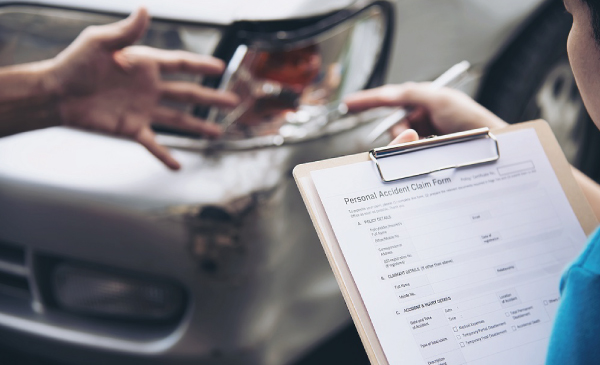How Does Car Insurance Work in Australia?
If you’ve ever wondered “How does car insurance work in Australia?” you’re not alone. Car insurance is one of those things that’s important yet often misunderstood. Whether you’re a seasoned driver or just getting your licence, understanding the ins and outs of auto insurance is important.
Now, is car insurance mandatory in Australia? The answer is yes. It is not just about safeguarding your car; it’s also about ensuring that you’re covered in case something goes wrong. The right cover will keep you and your vehicle protected on the road.
The Australian car insurance market is diverse, with various options to meet different needs and budgets. However, with so many choices, figuring out what you need can feel overwhelming. This blog breaks down the basics of how does car insurance work to help you make an informed decision.

What Is Car Insurance?
Car crash insurance is an undertaking between you and the insurer, where you pay a premium in exchange for coverage. It is mandatory to have one here because roads can be unpredictable and accidents happen when you least expect them. Different states have different rules, with some requiring Compulsory Third Party (CTP) insurance by law. Without it, you can’t legally drive on the roads.
Remember, auto insurance is your financial safety net when driving. It protects you from hefty out-of-pocket expenses in the event of an accident, theft, or damage to your vehicle. As such, having the right cover isn’t just a smart move—it’s often a legal requirement.
Types of Vehicle Insurance
When it comes to choosing the best car insurance for your requirements, there’s no one-size-fits-all solution. Each type offers different levels of protection and conditions. So, it’s important to understand your options before making a decision.
Most car owners prefer these types of car insurance:
-
Compulsory Third Party (CTP)
This is the most basic level of coverage and is mandatory in all states. It covers injuries to other people in an accident as well.
-
Third-party Property Damage
It covers damage to other people’s property in case of an accident. However, this coverage does not extend to your vehicle.
-
Third-party Fire and Theft
While similar to the previous product, this extends the cover to your car in case it’s stolen or damaged by fire.
-
Comprehensive insurance
As the highest level of car wreck insurance, it protects your car against damage, theft, and more. Yes, third-party liabilities are also included here.
How Does Third-party Car Insurance Work?
Third-party car insurance is an affordable option that provides accident coverage without a hefty price tag. However, the question remains – How does car insurance work in Australia? While it doesn’t cover repairs to your vehicle, the policy provides financial protection for damage caused to someone else’s vehicle or property. This makes it a popular choice for budget-conscious drivers who want basic coverage without paying for extras they may not need.
In Australia, third-party car insurance is a legal requirement for all registered vehicles. In case you accidentally cause damage to someone’s car or property, you won’t be left paying out of pocket for the repairs. However, as this insurance doesn’t cover injuries to you or damage to your car, get a car insurance check to assess whether it meets your needs.
What Does Third-party Car Insurance Cover?
Now that we’ve addressed “How does Australian car insurance work for the third-party insurance policies”, let’s explore the different levels of coverage they provide:
-
Compulsory Third Party (CTP)
Required by law, this covers medical expenses and compensation for injuries to other people.
-
Third-party Property Damage
This one covers damage to other vehicles or property caused by your car.
-
Third-party Fire and Theft
It adds protection for your vehicle if it’s stolen or damaged by fire.
When you opt for third-party car insurance, you’re primarily protecting yourself from the financial consequences of damaging someone else’s property. However, it’s important to remember that this type of insurance doesn’t cover your car unless you’ve chosen the fire and theft option.
How Does Comprehensive Car Insurance Work?
Comprehensive car insurance is the gold standard of insurance policies. It’s designed to cover almost anything that could go wrong, making it an ideal option for those who want peace of mind on the road. Moreover, it covers not only third-party liabilities but also damage to your car, regardless of who’s at fault.
Whether it’s a minor fender bender, a break-in, or damage from a natural disaster, comprehensive insurance has got you covered. That being said, you’ll need to check for policy exclusions and other conditions that come with such products. Now, you should have a clear answer to how does car insurance work in Australia.
What Does Comprehensive Car Insurance Cover?
Comprehensive car insurance typically includes:
- Damage to your vehicle caused by an accident, regardless of fault
- Theft or attempted theft of your vehicle
- Fire, vandalism, and natural disasters such as hailstorms
- Damage to other people’s property if you’re at fault in an accident
How Does Car Insurance Work for New Drivers?
Car insurance for new drivers typically involves higher premiums due to limited driving experience. And, how does car insurance work, you ask? Well, in this, insurers assess risk based on factors like age, driving history, and vehicle type. New drivers can choose from different policy types, such as comprehensive, third-party property, or CTP insurance, depending on their needs.
To lower costs, consider policies with higher excess or discounts for safe driving. Building a clean driving record over time can also help reduce premiums for new drivers. Here are some highlights about car insurance for new drivers:
- CTP insurance is mandatory for all drivers in Australia
- Young drivers under 25 face additional age-related surcharges
- Some insurers offer discounts for completing approved defensive driving courses
- Premiums vary between states based on local insurance regulations
- Usage-based policies (pay-as-you-drive) can help save money for occasional drivers
Factors Affecting Car Insurance Premiums
Several factors can influence the premium you’re required to pay. Understanding the points below can help you find the best car insurance deals:
-
Age and Driving Experience
Younger and less experienced drivers often face insurance charges.
-
Type of Car
Your car’s make, model, and age significantly impact your premium.
-
Location
Where you live and park your vehicle matters—urban areas usually come with higher premiums.
-
Driving Record
A clean driving history can lower charges, while accidents and violations can increase them.
-
Optional Extras and Deductibles
Choosing add-ons like roadside assistance or a higher deductible will increase the overall cost of the policy.
Choose the Right Car Insurance for You
Understanding how car insurance works in an accident is key to making the right choice for your needs. Whether you’re looking for the best low-price car insurance or want comprehensive coverage, knowledge about the types of insurance available is very handy. Additionally, getting the details of what they cover can help you stay protected on the road. Don’t forget to check car insurance policies carefully, considering factors like your driving experience, vehicle type, and location to find a suitable fit.
Contact Our Experts at Maribyrnong Smash Repairs
If you’re searching for car insurance, our team at Maribyrnong Smash Repairs can help you compare different policies. We will suggest options that are budget-friendly or cover specific situations, depending on your needs. That way, you save both money and time in the long run. Plus, it makes the whole process hassle-free.
If you are struggling with a question like “How does car insurance work in Australia”, call us on 1800 648 888. You can also drop us an email at info@maribyrnongsmashrepairs.com.au for further assistance.
FAQs
Compulsory Third Party (CTP) insurance is mandatory in Australia and you can’t legally drive without it.
Yes, you can transfer your policy to another vehicle by notifying your insurer and updating the details.
 Skip to content
Skip to content















